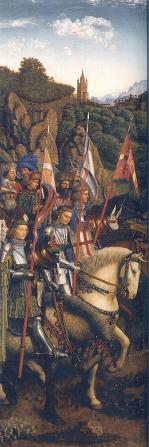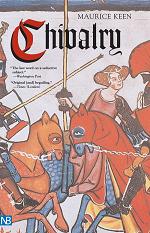
Some notes from reading the highly recommended history of medieval knighthood Chivalry by Maurice Keen. Since Medieval Europe was the last great Traditional Indo-European civilisation, it is well worth the study. As it is recent in time to us, we can trace its origins and development directly from the sources, without the need to rely on ancient myths. In particular, the system of chivalry developed out of earlier Roman and Germanic traditions. The intellectual foundations of chivalry can be traced directly to their understanding, and often creative re-interpretations, of Roman, Greek, and Trojan warriors, such as Hector, Alexander, Scipio, Julius Caesar, and Vegetius.
On the self-development of the Kshatriya caste.
Classical ethics, classical jurisprudence and classical philosophy, though by no means irreconcilable with Christian thought and exercising a powerful influence upon it, belonged to a pre-Christian tradition. Chivalry was thus reminded, forcefully, of the separation of the origins of its institutions from those of the priesthood, and of the original independence of its function — within the broad framework of divine providence — from the priestly one. ~ from Chivalry

A knight was expected to be courteous, loyal, nobly spoken, well clad, generous, sincere, humble, truthful, and valiant. He protected the weak, defended the faith, had a taste for adventure, and composed poems for his lady love.We can see the beginning of sports leagues in the Medieval tournaments, as they pitted one township or region against another and flew their own colours. The knights would contend for fame and fortune, although defeat could bring death, serious injury, or financial ruin. The aristocracy would “scout” for the best knights to recruit for their own militias. If a knight lost a joust in a contest, he could expect to lose his horse to his opponent. He might also be captured by the victor and held for ransom. And we think football players are tough guys. The women admired their knights and inspired them to greater deeds. Some even pledged to marry the victors. Yes, it is true, in those days that was considered a reward, especially since it often meant “marrying up” in class.
The Three Matters
There were three things that “mattered” to the knight of the Middle Ages:
- The matter of Britain.
The “matter of Britain” relates to King Arthur and the Knights of the Round Table. - The matter of France.
The “matter of France” is about Emperor Charlemagne and his paladins. - The matter of Rome.
The “matter of Rome” concerns the ancient Roman empire while also encompassing ancient Troy and Greece.
These matters were the subject matter for the epic poems of the era. Compare that to what “matters” to today’s “man”, even in the so-called “manosphere”.
Boucicaut
Boucicaut was a knight inspired by the chaste love of his lady. He wrote poetry and exercised regularly to keep fit. He could do a somersault in full armour, vault fully armed onto his horse, and climb up the reverse side of ladder in armour, using only his hands. Boucicaut learned from Vegetius, Scipio, and Demosthenes. He permitted no loose women around the camp, deplored drunkenness, and was a stern disciplinarian. He learned eloquence to rouse his men to action and to explain himself to subject people.
Pingback: How I got here – That Which Matters Most
Pingback: Guénon lecteur de Nietzsche | Gornahoor
Pingback: Guenon Reader of Nietzsche | Gornahoor
Pingback: Where Truth Will Dwell | Meditations on the Tarot
Pingback: » Where Truth Will Dwell
Pingback: » The Shadow of the Emperor
Pingback: » Macho Macho Man
Could you briefly address the symbolism in Chivalry of the horse?